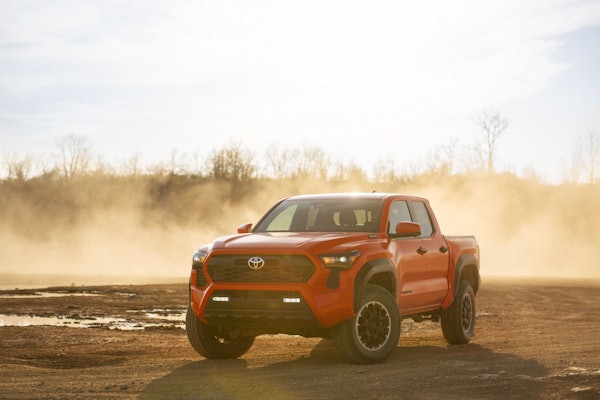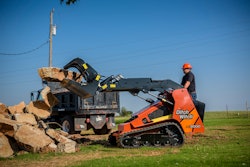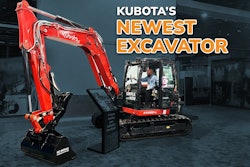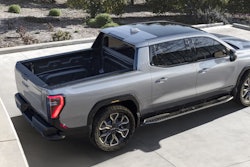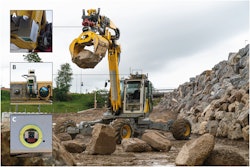 Because of their high maneuverability, wheel loaders used in the Electric Site would be hybrid units.
Because of their high maneuverability, wheel loaders used in the Electric Site would be hybrid units.Volvo Construction Equipment, the Swedish Energy Agency, Skanska Sweden construction firm and two universities have been working on what the group is calling the Electric Site project. The $30 million project is ambitious, aimed at creating an electrified quarry where not only are carbon emissions reduced by up to 95 percent, but also the total cost of quarry ownership can possibly be reduced by 25 percent.
While examining how to electrify typical quarry machines, researchers soon realized that this project was an opportunity to address inefficiencies throughout a quarry, particularly in the ways aggregate is handled. “It actually gets more interesting as we zoom out to broaden the perspective to the whole site,” says Andreas Sunesson, fleet and technology manager for contractor Skanska Sweden.
“A lot of what goes into production is the movement of the rock,” adds Johan Sjoberg, technical specialist in site automation. “Currently, there are a lot of yellow machines that move rock around and stockpile it.”
RELATED >> Volvo CE Unveils its Future: Concept machines reveal bets on automation, electrification
One particular problem is the use of large rigid-frame or articulated dump trucks to move aggregates from Point A to Point B for processing. Sometimes the processing path is not straightforward, involving intermediate staging areas (and cost) to the overall operation.
Then there’s the human element. If production is foremost, truck operators may feel encouraged to speed back to the loading point, only to end up back in a queue behind other trucks, a situation that results in both additional idling and tire wear.
Using today’s machines to address these problems presents limited solutions, says Sunesson. Examining the entire site instead gave the research participants the opportunity to identify which activities add value, and which could be eliminated.
“The aggregates business is a local business,” Sunesson adds. “Our products are not competing on a global market, and it’s very comfortable for us as quarry owners to use the haulers because we don’t need any detailed planning to use them.”
Since the large haulers usually have capacities above 50 tons, it makes it harder for quarry operators to incrementally increase or decrease their capacity, Sunesson says. “Often you just want an additional 20 percent capacity, but when you add a new haul truck, you almost double your costs, which makes us sensitive to unplanned downtime,” he says.
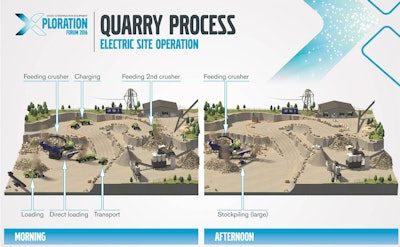 The Electric Site quarry, as envisioned by Volvo, with multiple HX1 load carriers, which can be added to or parked, according to each shift’s needs.
The Electric Site quarry, as envisioned by Volvo, with multiple HX1 load carriers, which can be added to or parked, according to each shift’s needs.Changing work place
Electrifying a quarry could create a big leap in this industry, Sunesson says. “One challenge is that in a quarry, the work place changes all the time. “Every time we blast, we move the face further away and we create more space,” he says. The resulting rock can be approached one of two ways: either it can be moved to the crusher, or a mobile crusher can be moved to the rock.
The Skanska quarry runs two shifts, which creates additional challenges to automation. In the morning, crushed rock is typically loaded by an excavator into rigid-frame dump trucks. In the afternoon shift, the morning operation continues, but additional rock is stockpiled, ensuring that aggregates are both ready to be loaded the next day and that there is a buffer against unplanned stops. “But this means that we’re letting the material down twice and stockpiling it with a wheel loader,” Sunesson says. “From a site perspective, that’s a lot of waste.”
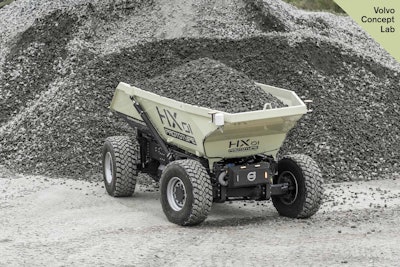 The autonomous, battery-electric HX1 would weigh 6 tons and carry 15 tons.
The autonomous, battery-electric HX1 would weigh 6 tons and carry 15 tons.So, how to electrify a quarry?
Flexibility had to remain key in whatever solution was devised, Volvo’s Sjoberg says. Quarries change not only from day to day, but from shift to shift, which is one reason why diesel-powered machines remain popular, since operators don’t have to plan their daily path.
One possibility was to have electric-powered machines mimic diesel-powered units. This strategy works fine for machines that don’t move around much, such as the mobile crusher and excavator – just connect them by cable to the electric grid.
But for highly mobile units such as wheel loaders and haulers, attaching a cable was not a possibility. Volvo met the wheel loader challenge with a hybrid prototype, which it says will increase fuel efficiency by 50 percent over conventional wheel loaders.
But the hauler was another story. The logistics of using an electrified larger hauler were impossible: In order to power a 50-ton hauler you would need roughly 15 tons of batteries. If you used smaller batteries, the trade-off would be more in-between cycle charges, and a decrease in productivity. That solution would also require high charging powers, putting too much demand on the power grid.
“We realized we had to go down in machine size,” Sjoberg says, but for manned machines that also meant additional operators and labor costs. All this pushed the researchers toward a battery-electric, autonomous vehicle, what Volvo is calling the HX1 load carrier.
As seen currently, a fleet of the 15-ton capacity machines, managed by a fleet control system, would replace the diesel-powered haulers on site. Functional at both ends, which eliminates the need to back up and reposition the carrier as is needed on machines with operator cabs, the HX1 can be loaded directly from the crusher, thereby reducing one time the rock is placed on the ground. Quarry capacity can be quickly adjusted by adding or subtracting one the HX1s, which weigh 6 tons and have weight calculating capabilities. “And if one of the machines goes down, it won’t influence production much,” Sjoberg says.
There are trade-offs, however. “Even though the HX1 is good at stockpiling, it’s not versatile, Sjoberg says. “It can only do this and nothing else, so we have traded efficiency for versatility.” And investments will need to be made in fleet system infrastructure to direct each HX1’s logistics. (To see the HX1 in action, view the video below.)
Transforming the aggregates industry?
“This project is a step towards transforming quarries and aggregates industry,” Sjoberg says. “By using electricity instead of diesel to power construction equipment in a quarry, we have the potential to deliver significant reduction in fuel consumption, carbon dioxide emissions, environmental impact and cost-per-ton.”
The Electric Site project will be finalized in 2018 with a 10-week demonstration at a Skanska Sweden quarry in western Sweden.






